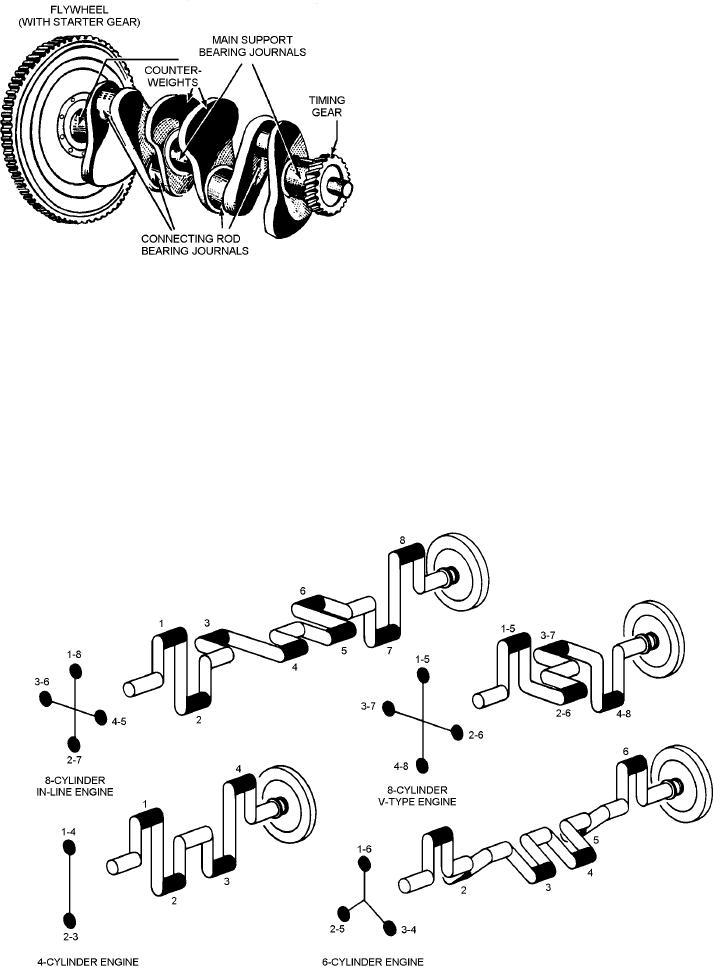
flywheel, clutch, transmission, and differential to drive
your vehicle.
The crankshaft is forged or cast from an alloy of
steel and nickel, is machined smooth to provide bearing
surfaces for the connecting rods and the main bearings,
and is casehardened or coated in a furnace with copper
alloyed with carbon. These bearing surfaces are called
journals. The crankshaft counterweights impede the
centrifugal force of the connecting rod assembly
attached to the throws or points of bearing support.
These throws must be placed so that they counter-
balance each other.
ASf03033
Crank throw arrangements for 4-, 6-, and
8-cylinder engines are shown in figure 3-34.
Figure 3-33.--Crankshaft of a 4-cylinder engine.
Four-cylinder engine crankshafts have either three or
five main support bearings and four throws in one
plane. In figure 3-34 you see that the throws for No. 1
and No. 4 cylinders (4-cylinder engine) are 180 degrees
Crankshaft
from those for No. 2 and No. 3 cylinders. On 6-cylinder
engine crankshafts, each of the three pairs of throws is
As the pistons collectively might be regarded as the
arranged 120 degrees from the other two. Such
heart of the engine, so the crankshaft may be
crankshafts may be supported by as many as seven
considered its backbone (fig. 3-33). It ties together the
main bearings; that is, one at each end of the shaft and
reactions of the pistons and the connecting rods,
one between each of the crankshaft throws. The
transforming their reciprocating motion into a rotary
crankshafts of 8-cylinder, V-type engines are similar to
motion, and transmitting engine power through the
ASf03034
Figure 3-34.--Crankshaft and throw arrangements commonly used.
3-28

